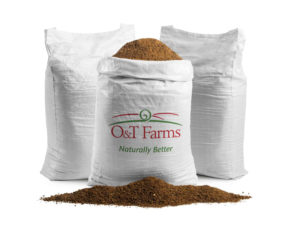At the 2018 Western Canadian Dairy Seminar in Red Deer, Alberta, Brian Van Doormaal, general manager, Canadian Dairy Network (CDN), reported they now have more than 2.2 million dairy cattle genotypes in their database. These are animals in Canada and the U.S., and 1.7 million of them are Holsteins.
Since the A.I. industry has adopted genotyping to acquire better males, 10 percent of this population is male. With the other 90 percent being female, it shows farmers are also genotyping animals.
“If you’re not, you know you are falling behind,” Van Doormaal said as he went on to explain how genomics is advancing the herds that have adopted the practice.
As the industry grows the reference population, it improves the accuracy of genomic selection. For example, in the Holstein breed, there are 33,000 proven sires that are genotyped, which results in a gain of 37 percentage points of average reliability for LPI and PRO$ above the average reliability of parent average before genomics, which is roughly around 25 to 30 percent.
“Because we have a huge reference population in Holsteins, the average genomic parent average for heifers is now 70 percent; you’ve more than doubled that,” Van Doormaal said.
The other breeds have a small reference population and therefore less of a gain in reliability. For Brown Swiss, the gain is 22 percentage points, 19 in Jersey, 11 in Ayrshire and 2 in Guernsey.
“We encourage breeds and populations to do more genotyping so we can have an increased size of reference population,” he said.
Not only has genomics improved reliability, but it has significantly decreased the generation interval. Before genomics, only progeny-proven sires were used as sires of sons in A.I., so the average age was running 6 to 7 years old.
Now with genomics, the average age of the sires of bulls entering A.I. is close to 30 months old. It is the same with the average age of the dams of the bulls entering A.I. at even less than 30 months old, and in vitro fertilization is speeding that up even faster.
“That’s reducing generation interval,” he said. “That helps make genetic progress.”
With these genetic gains, farmers are using far more young-sire semen than proven-sire semen.
“If you’re not using at least 70 percent young-sire semen in your herd, you’re not amongst the average,” Van Doormaal said. “Lots of people are much higher at 80, 90, 100 percent young-sire semen to increase the rates of genetic progress they can achieve in their herd.”
The use of genomics has more than doubled and may soon triple the rate of genetic progress in LPI and Pro$ (Figure 1), as well as improve other traits like fertility and longevity.
 Van Doormaal said those dairy producers who have already adopted genomics or decide to do so earlier than others will reap more genetic progress. Two percent of all herds in Canada have more than 80 percent of their milking herd genotyped.
Van Doormaal said those dairy producers who have already adopted genomics or decide to do so earlier than others will reap more genetic progress. Two percent of all herds in Canada have more than 80 percent of their milking herd genotyped.
Twelve percent of herds have 20 to 80 percent of their milking herd genotyped, and 56 percent have tried it a little bit with 1 to 20 percent of their cows genotyped. It also means 30 percent of all herds haven’t used it yet in the past nine years.
Compared to herds that have never done any genotyping, those herds that are at 80 to 90 percent of the herd genotyped are making twice the rate of genetic progress for Pro$. Herds with less than 20 percent of cows genotyped are similar in genetic progress to those that haven’t used it at all.
Van Doormaal said this isn’t cause and effect; it is merely association analysis. “Those herds that are really driving and want to be high for the genetic makeup of their herd and be fast at genetic progress are adopting these technologies to help them maintain that forefront lead,” he added.
The genomic testing of females provides four new opportunities for dairy farms:
1. To identify the young calves that do not have the level of genetics that warrant keeping them
2. To make improved selection and mating decisions based on knowing the genetic makeup of those females
3. To identify females that are carriers of undesirable genetic traits so you can manage those traits and the impact they have on your herd
4. To ensure you have correct parentage (In Canada, there is roughly a 5 percent error rate, but there is a lot of variability from herd to herd, with some herds surpassing 15 or 20 percent parentage error rates.)
The first three opportunities can affect a producer’s return on investment for genomic testing. When determining the return for a farm, one factor to consider is the number of heifers in the herd relative to the number of replacements needed. Producers also need to consider how much money can be made in selling females.
The genetic variability of the herd is also something to consider. Whether the parent average reliability of a herd is around 20 percent or 40 percent doesn’t matter, as genomics gives every Holstein herd a reliability close to 70 percent.
“Genomics helps everybody in an equal way. Whether you’ve been recording pedigrees for decades and generations, or whether you’ve never done it before, as soon as you start genotyping, you move up to that 70 percent accuracy equally and profitably as everybody,” he said.
The degree of genetic variability within a herd varies from farm to farm. Van Doormaal said the vast majority of herds fall into a correlation of 80 to 95 percent, but the only way to know the degree of re-ranking a herd will experience is by genotyping.
The greater the distribution of animals, the more it influences selection decisions and has an impact on the farm’s return on investment.
Genomics provides additional information to make herd management decisions.
When calves are young, it is a good time to decide which to genomic test and if there are any of them to sell based either on parent average or genomic parent average after testing.
For yearling heifers, there may be some to genomic test. The bigger decision is which ones to breed with conventional semen and which ones to breed with sexed semen. It is also a time to identify which heifers might be donor candidates for embryo transfer.
In first-lactation cows, the main question is to breed with conventional or sexed semen. Later-lactation cows would be to decide between conventional or beef semen. Candidates for beef semen could also be embryo recipients from the donor heifers.
The percentage of calves and heifers to genotype is independent to each farm. “If I said every one of you should be genotyping 100 percent of your heifers, that’s not the right information to give,” Van Doormaal said.
“If I said everybody should be genotyping 30 percent of their heifers, that’s not the right information to give,” he continued. “It’s variable from herd to herd to herd.”
However, by genotyping animals, it gives farms that 70 percent parent average reliability right from that moment. That’s higher than what most milking cows can ever achieve (Figure 2).
 Genomic testing is also the only way to know which females are carriers of undesirable genetic recessive traits and haplotypes. Once known, these can be controlled by not mating a carrier bull to a carrier female.
Genomic testing is also the only way to know which females are carriers of undesirable genetic recessive traits and haplotypes. Once known, these can be controlled by not mating a carrier bull to a carrier female.
Information on which bulls are carriers can be found on the CDN website. These bulls shouldn’t be excluded from a mating program, Van Doormaal said; they should just not be mated to known female carriers.
Since the extent of benefits of genomic testing varies from herd to herd, CDN and Holstein Canada have partnered to develop a new software tool to help producers make herd management decisions related to genetic improvement. It will be freely available to every dairy producer regardless of breed. Producers can create a web-based account with private access to herd data.
In addition to providing results of past breeding decisions and customizing LPI and Pro$ formulas, it will help producers evaluate an individual return on investment for the use of genomic testing, sexed semen and the use of top genetic sires. It also will help identify carrier females to manage the impact of genetic recessives and haplotypes. The release of this tool is scheduled for this fall.
Genomics has been shown to improve the rate of genetic progress. Van Doormaal said producers who are faster to adopt this technology will benefit the most from genomic testing their females.
“The basic fact, in Holsteins, is that genotyped heifers will reach an LPI or Pro$ reliability of 70 percent from one month on, and that will give you the confidence to make better mating and selection decisions,” he said.
The same level of accuracy has not yet been achieved in the other breeds, so those producers may have to be a little bit more cautious. However, an increased use of genomics across the industry will continue to improve accuracy and enhance decision-making on-farm. ![]()
Gerrit Kistemaker, chief geneticist at CDN, co-authored this research with Van Doormaal.

-
Karen Lee
- Editor
- Progressive Dairyman
- Email Karen Lee









